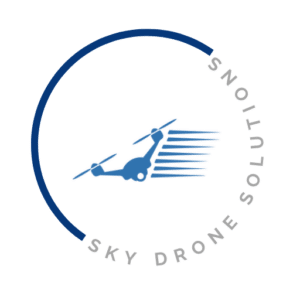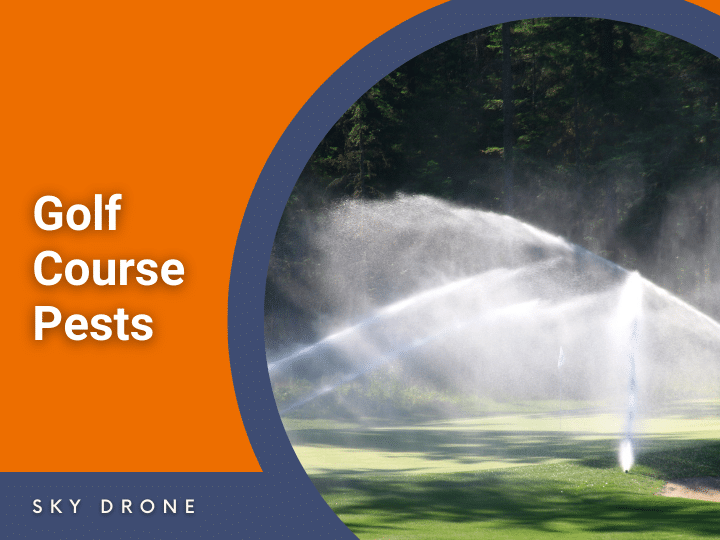Managed Golf Course Pests with multispectral services
Identifying Common Golf Course Pests in Colorado
Maintaining a pristine golf course in Colorado can be challenging, especially when pests are involved. Identifying common golf course pests is crucial for effective pest control and ensuring the health of your grass and turf.
Regarding golf course pests, some of the most prevalent culprits that cause significant damage include insects, fungi, and diseases.
The white grub is one of the most notorious pests affecting golf courses in Colorado. These larvae of beetles feed on grass roots, causing extensive damage and weakening the turf.
Another common pest is the sod webworm, a tiny caterpillar that munches on grass blades, leading to brown patches on the golf course’s lush green surfaces.
In addition, cutworms can wreak havoc by feeding on young grass plants, leaving behind uneven and unsightly areas. Aside from insects, fungal diseases can also cause significant damage to golf course grass.
Leaf spot, for instance, is a fungal disease that creates small, dark lesions on grass blades, eventually causing the turf to thin out. Dollar spot, another devastating disease, results in small, silver-dollar-sized dead grass spots.
These diseases compromise the aesthetic appeal and playability of the golf course. Golf course managers must adopt integrated pest management strategies to mitigate these issues.
Drones equipped with advanced multispectral imaging capabilities for golf course drone photography, such as those provided by Sky Drone Solutions, can help identify pest infestations early.
This technology enables precise monitoring of turf health, allowing prompt actions before significant damage occurs. Traditional pest monitoring methods can be time-consuming and less effective than the innovative solutions offered by drones.
Understanding and identifying common golf course pests in Colorado is essential for maintaining a pristine golfing environment.
By leveraging advanced technologies and proactive pest control measures, you can protect your golf course from the detrimental effects of pests, ensuring an enjoyable experience for all golf enthusiasts.
Common Pests Affecting Golf Course Turf
Maintaining pristine golf courses involves more than just regular mowing and watering; managing pests that can damage the turf is essential. Among the various pests that can wreak havoc on golf course turf, insects are the most common troublemakers.
One such pest is the Japanese beetle, which feeds on the grass and can cause significant damage to the roots of golf turf. Grubs, the larval stage of various beetles, also pose a threat as they live underground and consume grassroots, leading to weakened and unhealthy golf course turf.
Another significant pest is the sod webworm, which is known for creating small burrows and feeding on grass blades, causing brown patches on the golf course.
Armyworms are equally notorious; these pests are active primarily at night and can quickly devour large sections of turfgrass.
Chinch bugs are another common concern for golf courses, as they extract plant juices from grass, leading to yellowing and eventual death of the turf. Golf courses in warmer climates often face issues with mole crickets, which feed on the grass and create extensive tunneling networks that disrupt the turf’s integrity.
Similarly, ants can create unsightly mounds and disrupt the smooth playing surfaces that golf courses aim to maintain. Maintaining golf course aesthetics and functional quality requires an integrated pest management approach.
Regular monitoring and targeted treatments can help keep these pests in check. Sky Drone Solutions offers advanced pest monitoring using drone technology, enabling precise identification and timely intervention.
Drones equipped with high-resolution cameras can survey large areas swiftly, identifying early signs of pest invasion.
By leveraging multispectral imaging, Sky Drone Solutions provides unparalleled insights into pest activity and turf health, ensuring golf courses remain pristine and playable.
Incorporating drone technology into pest management plans can significantly reduce the reliance on traditional methods and enhance the effectiveness of pest control strategies.
Multispectral Imaging for Pest Control
Golf courses are expansive and require diligent pest management to maintain their pristine condition. One innovative approach to pest control on golf courses is multispectral imaging technology.
At Sky Drone Solutions, we understand that effective pest management is essential for ensuring that golf courses remain lush and healthy. Multispectral imaging allows for detailed analysis of the golf course landscape, enabling groundskeepers to identify problem areas with unparalleled precision.
Pest management on golf courses can be challenging because large regions need monitoring and treatment.
Traditional methods of pest control often need to catch infestations early. However, with multispectral imaging, groundskeepers can detect even subtle changes in the vegetation that may indicate the presence of pests. This advanced technology provides data that can be analyzed to develop targeted pest control strategies.
This enhances the effectiveness of pest management and reduces the amount of chemicals used, making it a more environmentally friendly option for golf courses. Implementing multispectral imaging for pest management on golf courses involves using drones equipped with specialized cameras.
These drones can fly over the golf course and capture images that go beyond what the naked eye can see.
By analyzing these images, groundskeepers can identify stressed areas of the turf that may be affected by pests and take early intervention measures.
The ability to pinpoint exact locations for treatment ensures that resources are used efficiently and reduces the overall cost of pest control operations for the golf course. At Sky Drone Solutions, integrating multispectral imaging into pest management systems is a game-changer for golf courses.
This technology not only helps maintain the aesthetic value of the golf course but also plays a crucial role in preserving the health of the turf. In conclusion, multispectral imaging is a highly effective tool for modern pest control practices.
It is an invaluable asset for any golf course looking to enhance its pest management program.
Drone Technology in Pest Detection
In recent years, the integration of drone technology in pest detection has transformed how golf courses manage and maintain their expansive turf areas.
Traditional pest monitoring methods often involve manual inspections that are time-consuming and pose a considerable risk of missing early signs of pest infestations. With the advent of drones, golf courses can deploy efficient and precise pest detection solutions that significantly enhance their pest control strategies.
Sky Drone Solutions offers a comprehensive suite of services tailored to meet the unique needs of golf courses, ensuring optimal turf health and playing conditions.
Utilizing advanced drone technology, drones equipped with high-resolution cameras and multispectral imaging tools can cover large areas quickly, providing real-time data on pest activity.
This technology allows golf courses to identify pest hotspots, assess potential risks, and implement targeted solutions promptly. By leveraging drone-based detection, golf course managers can more accurately gauge the extent of pest infestations, reducing the need for broad-spectrum pesticide applications.
This helps minimize chemical use and promotes a healthier, more sustainable environment for both players and the surrounding ecosystem. Golf club maintenance teams benefit immensely from the actionable insights from drone surveys, enabling them to prioritize and address pest issues more effectively.
Sky Drone Solutions’ expertise in drone services ensures that golf courses receive the most up-to-date and reliable data for their pest management programs.
As the technology continues to evolve, the role of drones in turf management and pest control will only become more integral, offering golf courses a cutting-edge advantage in maintaining pristine conditions.
Future advancements in drone technology are expected to refine pest detection capabilities further, opening up new horizons for proactive, precise, and eco-friendly pest management solutions across golf courses worldwide.
Advantages of Using Drones Over Traditional Pest Monitoring
In managing a golf course, it’s crucial to maintain pristine conditions to keep club members and guests satisfied. Traditional pest management methods often fall short of effectively addressing the intricate issues that arise within the expansive areas of a golf course.
Fortunately, drone technology offers substantial advantages over these traditional methods.
Using drones for pest monitoring significantly enhances the precision and efficiency of pest management on the golf course. This innovative approach allows golf course managers to get detailed views of large areas, locating pests and damage quickly without requiring cumbersome manual inspections.
A golf club can detect early signs of pest infestations and take swift action by employing drones equipped with advanced imaging technologies, such as multispectral cameras. This proactive strategy reduces the need for widespread pesticide applications, which can be costly and environmentally damaging.
Drones allow for the precise application of pesticides, ensuring that only the affected areas are treated. This specific targeting protects healthy turf from unnecessary pesticide exposure. It minimizes chemical use, promoting a greener, more sustainable golf course environment.
Moreover, drones offer unparalleled efficiency in pest monitoring and management, covering large areas in a fraction of the time it would take using traditional methods.
This time-saving benefit means that golf course maintenance teams can focus on other important tasks, ensuring the overall upkeep and presentation of the golf course.
Additionally, Sky Drone Solutions provides tailored drone pest control services that cater specifically to the unique needs of golf courses, combining cutting-edge technology with industry expertise to deliver the highest level of service.
In conclusion, integrating drones into golf course pest management offers numerous advantages, from improved pest detection and damage assessment accuracy to more efficient and environmentally responsible pesticide application.
These benefits help club managers maintain the beauty and playability of their courses, ensuring that golfers enjoy an optimal playing experience. Drones truly represent a game-changing technology in golf course pest control.

